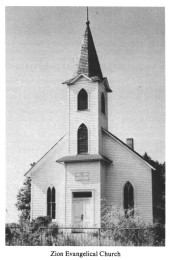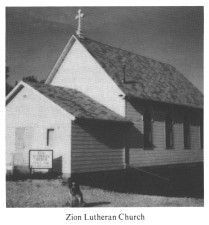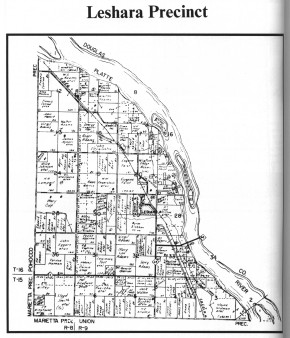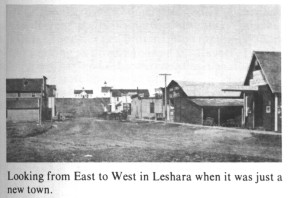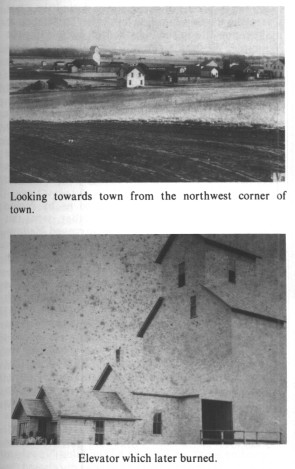 |
GREEN PRECINCT |
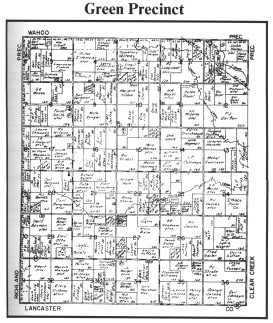 |
| (image links to larger map) |
LESHARA PRECINCTLeshara Precinct was created in 1905 out of a part of each of Union, Pohocco, and Marietta. It was the last precinct to be formed. In 1908, Leshara was a thriving town, having a large hotel, saloon, blacksmith shop, a general store, lumber yard, elevator, a drug store, a bank, school system and newspaper. A fire in 1906 destroyed the hardware store; and in 1914 the lumber yard, owned by the Zaugg brothers of Yutan, burned. On Feb.24, 1922, Sam Lipp's general merchandise store burned, and May 29, 1926, lightning struck and burned the farmers' Co-operative Elevator. Several floods, one on June 15, 1937, another on Aug. 2, 1959, ravaged the town. Lesser amounts of damage occurred at various later dates, due to flooding of Otoe Creek, south of town. The LongBranch Caffe, owned by Donna Lorenz, is now the only business left in the town. Precinct Officers 1983-87: Chairman -- Wayne J. Widman, Clerk -- James Snyder, Treas. -- John J. Larson. The population in 1910 was 384, in 1980 the figure was 556. Leshara precinct includes the village of Leshara and the Woodcliff subdivision at the north end along the Platte River. Submitted by Orlinda Karloff page 78 LESHARALeshara is the youngest town in Saunders County, having been platted on June 5, 1905. It lies in the northeast quarter of section 29, township 16, and range 9. Leshara is the only town in the precinct of the same name and is on the Burlington Railroad, 18 miles northeast of Wahoo. The town was named after a chief of the Pawnee Indians who formerly lived in the area. His name was Pita (man) Lesharu (chief). Judged by his name to be descended from a French leader who joined the tribe, Leshara was the "big shot" of his time. He kept his braves in order and many of our early pioneers knew and respected him. He had the reputation of being a peace loving man. A professed Christian, his views on marriage were evidently derived from the Old Testament. His political views were those of rugged individualism. The Pawnees had one of their principal towns near the place where Leshara is now located. They built no flimsy teepees but real houses constructed of timber with prairie sod facing the roof.
The white men knew the village in pioneering days and reported that several hundred Indians lived there. It was in existence at the time of the Lewis and Clark expedition and is mentioned in their reports as having been visited by one of their scouting parties. The known history of the places stretches well over a period of a century. Many Indian relics have been found in the vicinity and are still encountered from time to time in the grading of roads and the plowing of fields. A monument to the Pawnee has been erected on the McClean farm.
The Great Northern Railroad helped establish the town and ran special trains for those wanting to take part in the event. The road was later sold to the Burlington Company. There were many businesses in Leshara when the town was new: Gross & Nelson Hardware, The Leshara Meat Market operated by W.C. Williams, The Leshara State Bank, by J.C. Foster, Rutt & Zaugg Lumber Co., a tavern, The Leshara Drug Store operated by O.S. Strain, Feuersteins Shoes for Men. There were two grocery stores. There was also a newspaper, "The Leshara Chief," owned by Fassett Publishing Co., and sold to O.S. Strain in 1908. Also a blacksmith shop which was operated by August Barth for many years before its closing. Later, when automobiles came onto the scene, there was a service station. The town also had a doctor by the name of Stiers. There was also a dentist. A Burlington Railroad Depot building was one of the first buildings built. Norman Stevens, light-heavyweight from Leshara, won a decision over Knowles of Lincoln in the Golden Gloves contest in January of 1940. Submitted by Mary Ann Cernin THE LESHARA POST OFFICEWhat was probably the first Leshara Post Office was located at the home of William A. Estey, who resided at the farm now known as the Eugene Feist place. The post office was named Estina and established October 20,1889. Mrs. Estey was the postmaster, and mail was brought by stage which ran twice a week between Ashland and Linwood in Butler County. On June 22, 1883, the office was discontinued. A ferry went into operation over the river at Fremont, and the people were served by that office. The Leshara Post Office was established February 27, 1906. Ray S. Estey was the first postmaster, and a son of the pioneer postmaster at the office Estina. Mr. Estey served until June 17, 1907, when he resigned and moved away. Mrs. Penney was postmaster for a number of years. In 1934, Muriel Bishop Witte became postmaster and remained in the office until 1969. From that time until the present, Betty Mueller has been the postmaster. When she became poastmaster, the post office was moved to her home. Submitted by Mary Ann Cernin THE ALFALFA MILL AT |
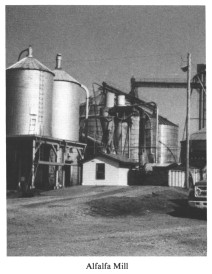 |
| Alfalfa Mill |
THE LESHARA COMMUNITY
CLUB
The Leshara Community Club was organized in 1913 by Mrs. Grace Williams, Mrs. Hazel Wolfe, Mrs. Bertha Anderson, and Mrs. Emma Cords. Other early members were Mamie Feist, Lizzie Feist, Fannie Kammerer, Lillie Lamuel, Ceil Green, Alice Winkelman, Maud Feist and Vida Williams.
The club aims were community betterment and sociability. Meetings were held every two weeks. Around 1950, this was changed to once a month.
The first members all lived in Leshara, but was soon changed to include the women of the community.
A lesson was conducted at each meeting. The executive committee members selected the lesson topics, which were items of current interest. This committee also appointed the lesson leaders.
Once a year a tour was taken to some place of interest and an annual picnic was held.
The club disbanded in 1979, after being active for sixty-six years. Submitted by Mary Ann Cernin
THE LESHARA STATE BANK
The Leshara State Bank had its beginning on June 5, 1905. On this day lots were being sold at auction for $40 and $50. John Foster purchased a plot and immediately had Henry Barnhardt and Bert Hollenbeck build a two-story white frame building, which was called the Leshara State Bank.
No early history of the bank is known except that under Foster, the bank nearly went broke. He asked the original share owners to pay as much as their
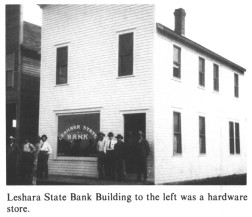 |
| Leshara State Bank Building to the left was a hardware store. |
page 79
| Back | Contents | Next |
The Saunders County NEGenWeb Project
